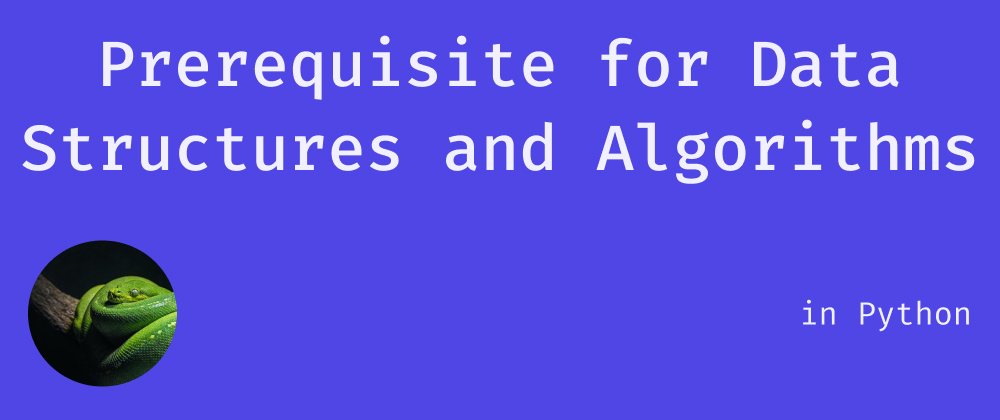Whether it is Data Structures or Algorithms first, it is still the same.
We would look briefly at:
- Variables and expressions
- Functions
- Condition
- Iteration
Variables and expressions
Variables are of the form, var_name = value. There is no semicolon.
These are some examples:
>> name = "daniel"
>> age = 34
>> height = 6.6
>> numbers = [1, 2, 3, 4, 5]
>>
An expression will result in a value or "return" a value.
>> 2 + 3
>>
>> import datetime
>>
>> currentYear = datetime.datetime.now().year
>> age = 34
>> yob = currentYear() - age
>>
>> # some operators
>> # +, -, /, *, **, %
>> # >, <, ==, <=, >=, !=
>>
functions
This is how we would create a function in python:
def func_name([parameters]):
# func_body
A function that prints 3 to the screen:
def print_number():
print(3)
print_number()
# 3
A function that returns 3
def returnNumber():
return 3
res = returnNumber()
print(res)
# 3
A function with a parameter a. We add 2 to a and return the results:
def addTwo(a):
b = a + 2
return b
res = addTwo(3)
print(res)
# 5
Decision structure
An if statement is of the form:
if condition:
# if-body
The body/block of the if statement is executed when the condition evaluates to True
age = 20
res = age > 18
if res:
print(age)
# prints 20 because age, 20, is greater than 18
We can add an else part to the if statement. This is the part of the code that is executed when the condition evaluates to False.
if condition:
# if-body
else:
# else-body
This is an if-else statement:
age = 12
res = age > 18
if res:
print(age)
else:
print("sorry, age must be above 18")
# prints, sorry, age must be above 18, since age is less than 18
We can use the and and or to compound logical expressions. and and or are known as logical operators.
age = int(input("Enter age: "))
if age > 18 and age % 2 == 0:
print("Age is greater than 18 and it is even")
else:
print("age must be greater than 18 and it is even")
We can also nest the if-else statements
age = int(input("Enter age: "))
if age > 18:
if age % 2 == 0:
print("Age is greater than 18 and it is even")
else:
print("Age must be even")
else:
print("age must be greater than 18")
Iteration
This is known as looping. We for loop and while-loop in python
This is a for-loop that prints numbers from 0 to 5 (exclusive).
# for i in range(5):
# for i in range(0, 5):
for i in range(0, 5, 2):
print(i)
We can print the content of a list using a for-loop
numbers = [1, 2, 3, 4, 5]
for i in numbers:
print(i)
Loops are index-based and we can pass the size of the list as an argument to the range function to determine where the loop ends.
for i in range(len(numbers)):
print(numbers[i])
We can also nest for loops:
numbers = [1, 2, 3, 4, 5]
for i in numbers:
for j in numbers:
print(i * j)
This is how we write for loops in python:
while condition:
# while-body
Let print from 0 to 5 inclusive
start = 0
end = 5
step = 1
# this is the same as the above
# start, end, step = 0, 5, 1
while start <= end:
print(start)
start = start + step
# start += step
We can use a while loop to loop through a list
numbers = [1, 2, 3, 4, 5]
i = 0
while i < len(numbers):
print(numbers[i])
# i+= 1
i = i + 1
We can nest while loops too
i = 0
while i < 5:
j = 0
while j < i+1:
print(i*j)
j += 1
i += 1
So, what is next?
So what is next? A series on Algorithms and Data Structures in Python. It is more or less Introduction to data structures and Algorithm 1. We would be using Python. This means we can use another language. Stay tuned as they say. Seriously stay tuned.







Latest comments (1)
Really Important for me thank you for sharing over here.